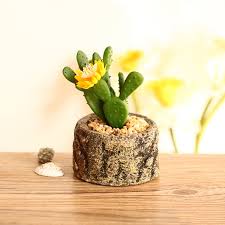The Popularity of Blue Willow China in Europe

Blue Willow China, with its timeless blue-and-white porcelain design, has captured the hearts of collectors, decorators, and history enthusiasts for centuries. Since its creation in the late 18th century, this iconic pattern has become an essential part of European culture, representing both luxury and tradition. Its captivating design, which features delicate scenes of Chinese landscapes, pagodas, and birds, speaks not only to its aesthetic beauty but also to the fascination with the East that characterized much of Europe’s history. Today, Blue Willow China continues to be an enduring symbol of European taste, sophistication, and craftsmanship.
In this article, we will explore the factors that contributed to the widespread popularity of Blue Willow China in Europe, its historical significance, and how it has influenced European culture, from the aristocracy to the middle class. We will also examine its role in European interior design, the growth of the collecting culture, and how Blue Willow China remains relevant to this day in various aspects of European life.
The Origins of Blue Willow China and Its European Introduction
The Blue Willow design was first introduced to the European market in the late 18th century, during a period of intense interest in Chinese art and culture. The pattern was based on the traditional Chinese porcelain designs that had long been exported to Europe, particularly through trade routes connecting China and the West. These porcelain pieces were immensely popular among European aristocrats who were fascinated by the exotic designs and fine craftsmanship.
Manufacturers like Spode, Wedgwood, and others in England were among the first to replicate Chinese porcelain designs, making them accessible to a broader audience. The Blue Willow pattern was one such reproduction, designed to mimic the intricate scenes found on Chinese porcelain. The combination of beautiful blue imagery and the romantic narrative it portrayed resonated deeply with European tastes and cultural inclinations. By the end of the 18th century, the Blue Willow pattern became synonymous with fine dining and elegant entertaining, making it an instant favorite across Europe.
One of the main reasons Blue Willow China became so popular was due to the growing interest in the Orient, known as “Chinoiserie” during the 18th century. This was a European artistic movement that reflected an admiration for Asian arts and decorative motifs. Blue Willow China was not only seen as a piece of fine tableware but as a representation of the period’s fascination with Eastern culture. It became part of the décor in European homes, complementing the grand and refined lifestyles of the aristocracy.
The Social and Economic Impact of Blue Willow China in Europe
The popularity of Blue Willow China was not limited to the aristocracy. In fact, it became a beloved item among the middle class in many European countries, particularly in Britain, France, and Germany. As mass production techniques improved and the cost of porcelain decreased, Blue Willow China became more accessible to a wider audience. It was no longer confined to the wealthy elite but was increasingly found in homes of the rising middle class, who sought to emulate the refinement of the upper class.
During the 19th century, Blue Willow China became a symbol of sophistication and cultural literacy. It was a way for individuals to showcase their social status, particularly in middle-class households where it became a fixture in dining rooms and kitchens. The Blue Willow pattern added a sense of elegance to even the most modest meals, and its intricate design told stories of romance and adventure that delighted both the young and old alike.
The pattern’s availability through department stores and pottery shops made it a household staple. Families often accumulated entire sets of Blue Willow China, which were used for formal dining as well as for special occasions such as birthdays, weddings, and holidays. This widespread availability contributed to the pattern’s enduring popularity in Europe and its continued use for generations.
Blue Willow China and European Interior Design
In addition to its role in dining, Blue Willow China played a significant part in European interior design. Its blue-and-white motif became a classic combination that complemented a variety of home décor styles. From grand palaces and stately homes to more modest cottages, the porcelain plates, teapots, and serving dishes found a place in homes across Europe.
Blue Willow China became especially popular in Victorian-era homes, where it was often displayed in glass-fronted cabinets or on mantelpieces as part of a broader aesthetic that celebrated the beauty of antique porcelain. In these homes, Blue Willow was more than just tableware—it was a piece of art, treasured for its craftsmanship and historical value.
The classic blue-and-white color scheme of Blue Willow China worked well with the rich fabrics, woodwork, and ornate furniture that were characteristic of Victorian interiors. It provided a soothing contrast to the dark colors and intricate patterns found in other elements of the décor. In addition, the exotic nature of the Blue Willow design enhanced the appeal of the “Oriental” influence in interior design, which was a common feature in European homes of the time.
In the 20th century, the Blue Willow pattern found a place in modern European homes as well. Though modern design trends moved away from ornate styles, the simplicity of the blue-and-white porcelain continued to resonate with those seeking elegance and tradition in their homes. Even in minimalist or Scandinavian-inspired interiors, Blue Willow China became a beloved accent piece, blending seamlessly with clean lines and neutral tones.
The Role of Blue Willow China in European Collecting Culture
As Blue Willow China continued to be used in homes, it also gained recognition as a valuable collectible item. The design’s historical significance, coupled with its aesthetic appeal, made it a sought-after piece among collectors. The popularity of collecting porcelain in Europe, particularly in Britain, contributed to the rise of Blue Willow as a collectible item, and many enthusiasts sought out rare and vintage pieces to add to their collections.
In the 19th and early 20th centuries, collectors in Europe would often visit estate sales, auctions, and specialized antique dealers in search of unique variations of Blue Willow China. Some collectors sought out pieces from specific manufacturers, while others looked for variations in the design or rare patterns that had been produced in limited quantities. These collectors appreciated Blue Willow China not only for its visual appeal but also for the cultural and historical narratives it carried.
Today, Blue Willow China remains a highly collectible pattern in Europe, with many collectors willing to pay a premium for rare and well-preserved pieces. Auctions continue to feature Blue Willow China, with collectors bidding for the chance to own a piece of this iconic porcelain. The popularity of Blue Willow as a collectible speaks to its enduring legacy and continued relevance in European culture.
The Enduring Popularity of Blue Willow China in Modern Europe
Although Blue Willow China was initially associated with wealth and aristocracy, its appeal has not waned over the centuries. In modern Europe, Blue Willow remains a beloved part of both everyday life and special occasions. It is often seen in gift shops, department stores, and online marketplaces, where contemporary consumers continue to buy Blue Willow China as a way to add elegance to their homes and dining experiences.
The pattern’s historical significance and timeless appeal make it a staple in European homes, where it is often passed down from generation to generation. Families who own Blue Willow China cherish it as a valuable heirloom, and it is frequently used in family celebrations such as weddings, birthdays, and holiday dinners. Its presence on the dining table evokes a sense of tradition, connecting modern families with their cultural heritage.
Moreover, in an increasingly globalized world, the European fondness for Blue Willow China also highlights a continued interest in tradition and craftsmanship. The appeal of Blue Willow extends beyond just its design; it represents an enduring connection to history, culture, and the artistry of past generations. In Europe, where heritage and culture are highly valued, Blue Willow China remains a symbol of refinement and taste, appreciated by those who seek to preserve the beauty and traditions of the past.
Conclusion
The popularity of Blue Willow China in Europe has endured for over two centuries, and its appeal shows no sign of fading. From its early days as a symbol of luxury and refinement to its widespread use in middle-class homes, Blue Willow has become an essential part of European culture. Its beautiful design, historical significance, and place in European interior design and collecting culture have solidified its status as a timeless classic.
As Europe continues to celebrate its cultural heritage and embrace the beauty of traditional craftsmanship, Blue Willow China remains a beloved symbol of elegance, nostalgia, and sophistication. Whether displayed in a collector’s cabinet, used on the dining table, or cherished as a family heirloom, Blue Willow China continues to play an integral role in European homes, adding beauty and meaning to the lives of those who appreciate its rich history and exquisite design.

